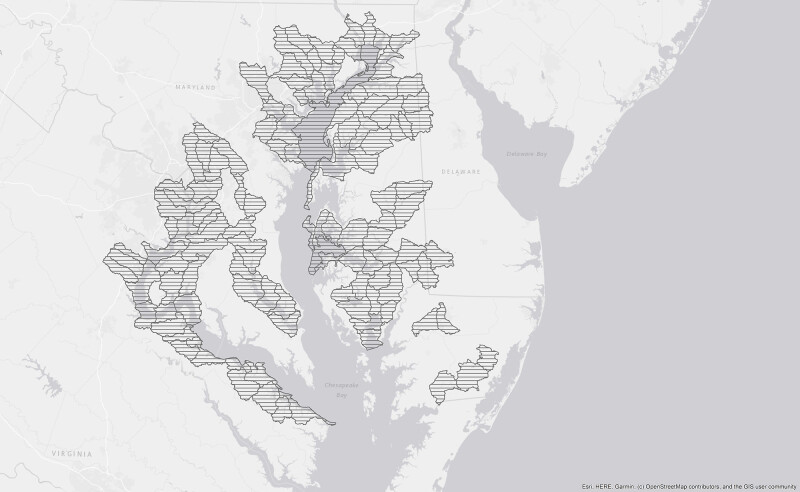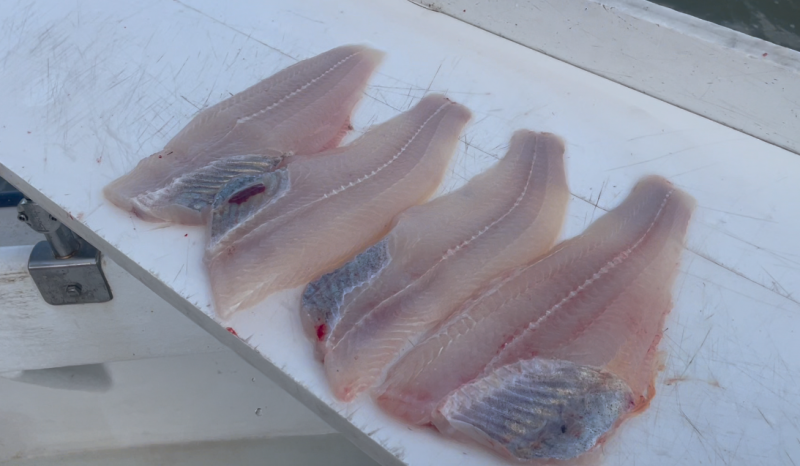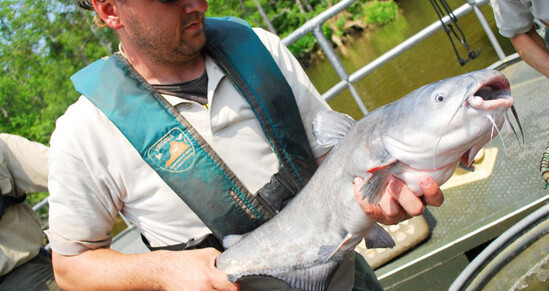Since getting into tributaries leading to the Chesapeake Bay, the blue catfish has spread through the rivers and into the bay itself. Two Maryland Department of Natural Resources pilot programs aim to depopulate the stock of invasive blue catfish in the bay and its tributaries.
The Blue Catfish For Hire/Commercial Pilot Program, and the Mid- and Lower-Bay Finfish Trotline pilot programs are for watermen interested in hauling tons of the invasive species to sell for profit.
“The silver lining to the challenges blue catfish pose in the Chesapeake Bay is they taste great,” said DNR Invasive Fishes Program Manager Branson Williams. “These pilot programs aim to reduce barriers for commercial fishermen to catch and sell more blue catfish. Our goal is to reduce biomass, and these programs will help with those efforts.”
The Blue Catfish Charter Pilot Program allows watermen to operate for-hire and commercial fishing trips simultaneously, and removes crew limits on commercial hook-and-line fishing trips that target blue catfish. The move will encourage captains to sell excess blue catfish after a charter trip, rather than releasing the fish.
Applications for the program are being reviewed on a rolling basis.
The Mid- and Lower-Bay Finfish Trotline Pilot Program will allow harvesters to use finfish trotlines in the mainstem Chesapeake Bay south of the Bay Bridge. Participants must have a Maryland Unlimited Tidal Fish License (TFL) or Unlimited Finfish Harvester License (FIN).
Current license holders can still use finfish trotlines to harvest blue catfish and other fish in legal waters of the state without participating in this program.
The two pilot programs are meant to lower the effect blue catfish have on native species and ecosystems. There’s no season, or limit, on recreational blue catfishing for anglers that have a Maryland fishing license.
Blue catfish have voracious appetites and eat larger fish as they get bigger, like native species essential to Maryland including blue crabs.

How widespread is the problem of the blue catfish invasion? Studies by Maryland DNR estimated that in just one 5-mile section of one tributary, there are about 75,000 blue catfish, Williams said.
In 2023, 4.2 million pounds of blue catfish were commercially harvested in Maryland waters, including the Potomac River, Williams said. Anecdotal info from Potomac River watermen indicates that it’s getting harder to catch blue catfish there, which may mean fishing is impacting the blue catfish population, Williams said.
The average blue catfish is between 6 and 10 pounds. They live to 19-22 years, and can grow up to 50-80 pounds. The species is fecund, with females having 8,000-10,000 eggs per kilogram of body weight, Williams said.
Williams says there’s nothing funny about the taste of blue catfish, which he enjoys. “They’re delicious, they’re mild. It’s not quite the taste people associate with catfish,” he said.
The department also is considering relaxing regulations prohibiting finfish trotlines south of the William Preston Lane Jr. Memorial (Bay) Bridge. The idea is to combat increased abundance and expanded distribution of invasive catfishes through larger harvests.








